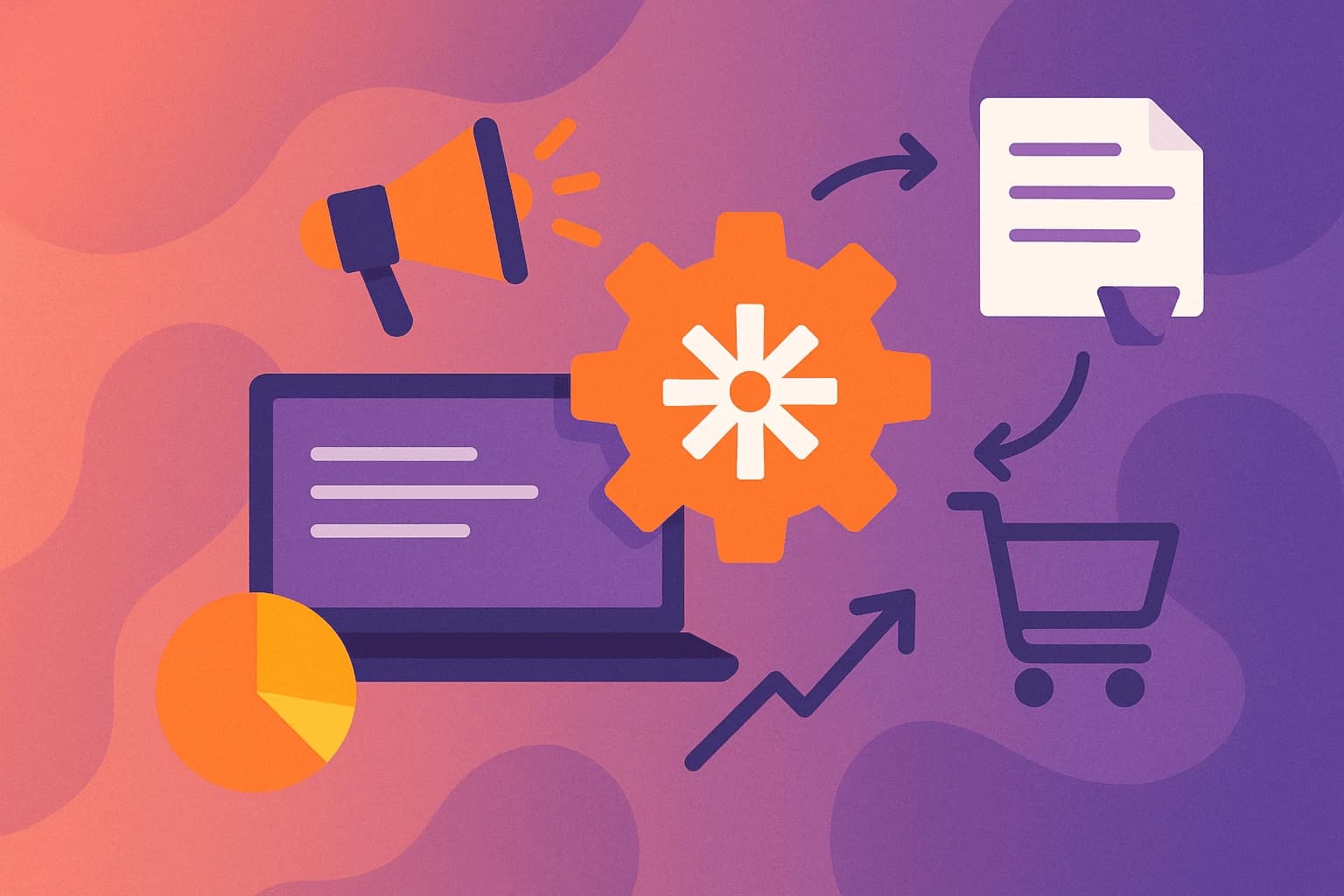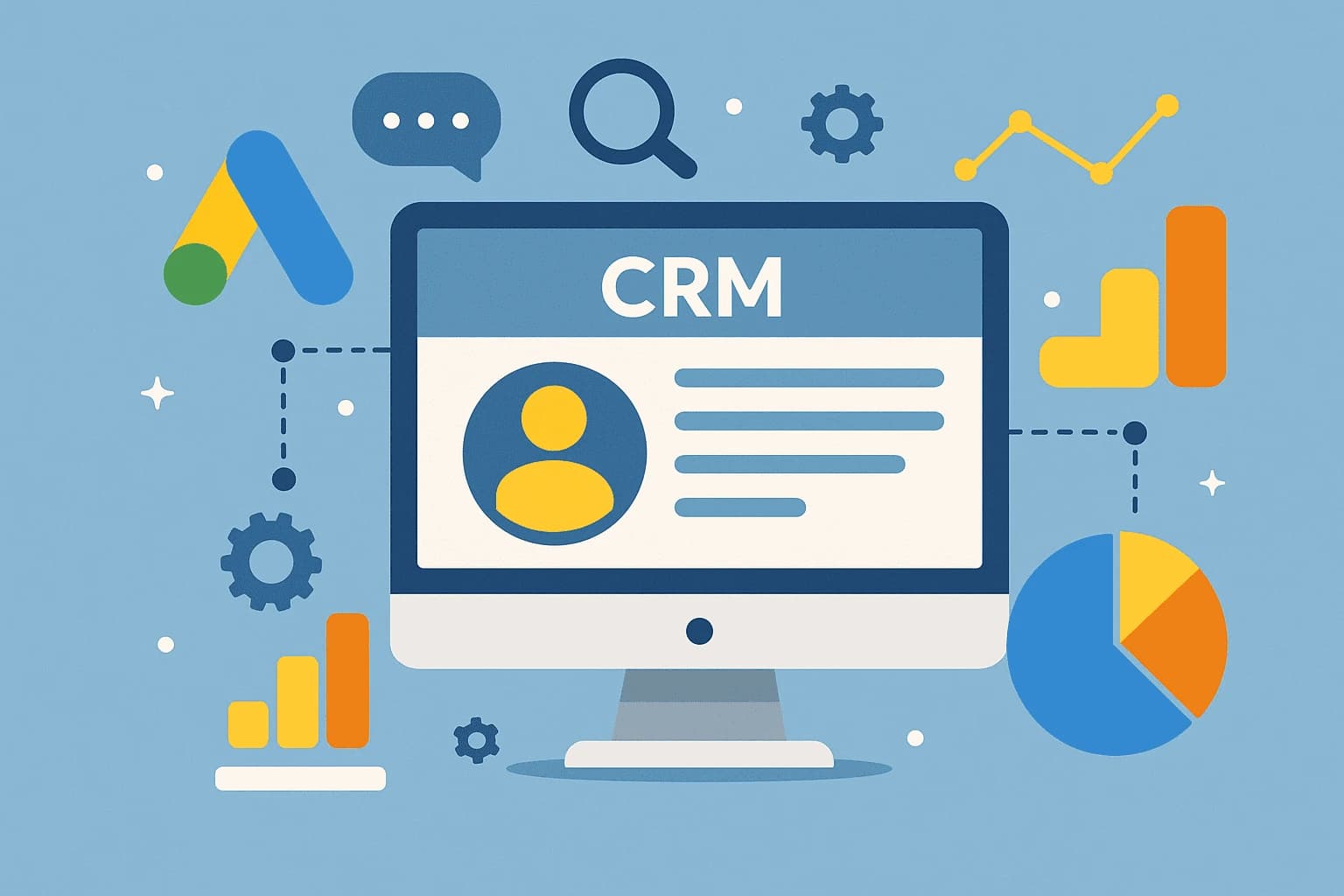© 2025 Waqar AzeembyTetraseven

* All product/brand names, logos, and trademarks are property of their respective owners.
In today’s fast-paced digital world, marketers are juggling more tasks than ever from managing email campaigns and social media posts to tracking leads, running A/B tests, and generating reports. It’s a lot. And let’s be honest: doing all this manually not only wastes time but increases the risk of human error and missed opportunities.
That’s where workflow automation steps in not as a luxury, but as a necessity.
Workflow automation allows marketers to create systems that run repetitive tasks on autopilot. Think of it like setting up digital dominoes: once you trigger the first one (like a new subscriber joining your list), the rest of the actions (welcome email, follow-up offer, reminders) happen automatically and perfectly timed.
The beauty of automation is that it doesn’t just save time. It improves consistency, boosts campaign performance, and helps marketers scale their efforts without burning out. Whether you’re a solo marketer, part of a growing team, or running an agency, having the right workflows in place can mean the difference between scattered efforts and streamlined success.
In this blog, we’ll explore everything you need to know to get started or level up your marketing automation game. You’ll discover:
The best tools to power your workflows
The right triggers to use for different marketing goals
Smart techniques that make automation feel personal, not robotic
By the end, you’ll be ready to build workflows that do the heavy lifting while you focus on strategy and creativity.
Choosing the right tools is the foundation of any successful marketing automation strategy. Whether you're running campaigns for a startup or managing complex workflows for a large enterprise, the tools you pick will determine how easily you can execute, track, and scale your efforts.
Let’s break down the three main categories of tools marketers can use for workflow automation all-in-one platforms, specialized tools, and tools gaining popularity in Pakistan and South Asia.
If you're looking for simplicity and power in one place, all-in-one platforms are the way to go. These tools combine email marketing, customer relationship management (CRM), landing page creation, lead scoring, analytics, and automation workflows all under one roof.
Some top players include:
HubSpot: Great for inbound marketing, lead nurturing, and CRM. It offers drag-and-drop workflows and deep analytics. Ideal for medium to large teams.
ActiveCampaign: Known for its powerful automation builder and personalization features. You can create advanced workflows based on user behavior, lead score, or tags.
Zoho Marketing Plus: A solid choice for small to mid-sized businesses, especially in regions like South Asia. Integrates with other Zoho tools for smooth business operations.
These platforms are great if you want to centralize your marketing efforts and reduce tool-switching.
Sometimes, you don’t need a mega-suite just the right tool for the job. Here are top picks for specific tasks:
Mailchimp: Excellent for email campaigns. It offers easy-to-use automations like welcome sequences, abandoned cart emails, and post-purchase follow-ups.
Buffer / Hootsuite: Great for automating social media scheduling, reposting evergreen content, and reporting.
Salesforce: While it’s a full CRM platform, Salesforce's automation tools (like Pardot) are powerful for B2B marketing, especially for lead scoring and nurturing.
These specialized tools often offer more depth in their respective areas compared to all-in-ones.
In markets like Pakistan, affordability, ease of use, and local support often influence tool choice. Here are some tools gaining traction:
Klaviyo: Popular with eCommerce brands, especially those using Shopify. Great for automating email flows based on customer behavior.
Brevo (formerly Sendinblue): Offers email, SMS, and WhatsApp automation at competitive prices. Supports localized languages and is friendly to SMEs.
Local CRMs: Tools like Sapa CRM or Convo are gaining popularity in local startups for lead tracking and messaging automation.
Choosing region-friendly tools can help with language, currency, and customer support challenges that global platforms might not solve easily.
The real power of marketing automation lies in setting the right trigger at the right time and following it up with the right action. A trigger is the event that starts your automation. It could be as simple as a form submission, or as advanced as a customer visiting a product page three times without buying.
When combined with smart techniques, triggers allow your workflows to feel human and timely not robotic or annoying. Here’s how to make that happen:
Triggers are your "if this happens…" starting points. The most successful marketers use behavioral and event-based triggers to keep customers engaged.
Some of the most common include:
New subscriber joins your list → Trigger a welcome email series
Abandoned cart → Send a reminder email or offer a discount
No activity for 30 days → Trigger a re-engagement campaign
Visited a specific page multiple times → Notify the sales team or show a special offer
Downloaded a lead magnet → Start a lead nurturing sequence
The more personalized your trigger, the more relevant your automation feels and the better your results.
It’s not just about when to send something it’s also about how you send it. Here are some powerful techniques to use inside your workflows:
Segmentation: Break your audience into groups based on behavior, interests, or location. For example, send different emails to first-time buyers vs returning customers.
Personalization: Use dynamic content, such as the user’s name, product preferences, or location. This improves open and click-through rates.
Drip Campaigns: These are timed sequences of messages that educate or nurture leads step-by-step. For example, a 7-day series explaining your service or product benefits.
A/B Testing: Test different versions of your emails or SMS messages within your workflow to see what gets the best results subject lines, CTAs, images, etc.
Lead Scoring: Assign points to different user actions. When a lead reaches a certain score, trigger the next step (e.g., send to sales).
These techniques ensure your automation flows aren’t just running they’re converting.
Want to skip the theory and jump straight into building? Here are some plug-and-play workflow ideas:
Welcome Series
Trigger: New subscriber
Flow: Introduction → Value offer → Social proof → CTA (shop, book, explore)
Cart Abandonment Recovery
Trigger: Cart started but not completed
Flow: Reminder email → Follow-up with offer → Last-chance nudge
Re-Engagement Campaign
Trigger: Inactive for 60+ days
Flow: “We miss you” message → Offer incentive → Unsubscribe or re-engage
Lead Magnet Nurturing
Trigger: eBook or checklist downloaded
Flow: Educational emails → Problem-solution content → Product pitch
You can build these flows inside tools like Mailchimp, ActiveCampaign, or Klaviyo using drag-and-drop automation builders.
Once you’ve mastered the basics of marketing automation tools, triggers, and simple workflows it’s time to level up. Advanced automation strategies can help you go beyond standard “if-this-then-that” flows and tap into more powerful, predictive, and personalized systems.
This section explores next-gen techniques that are reshaping how marketers automate, especially with AI, multichannel engagement, and data privacy in focus.
Artificial Intelligence (AI) is no longer just a buzzword it’s transforming marketing automation. With predictive capabilities, AI can:
Score leads based on likelihood to convert
Tools like Salesforce and ActiveCampaign use AI to rank leads automatically.
Send emails at the best time for each individual
Platforms like Klaviyo or Brevo analyze open history to optimize delivery times.
Predict churn and trigger win-back campaigns
If a user’s engagement drops suddenly, automation can step in before you lose them.
Generate content dynamically based on audience interests or engagement level.
The result? Smarter workflows that react to real behavior not just static rules.
Today’s users don’t stick to just one channel. They move between email, SMS, WhatsApp, websites, and social media sometimes all in a single day.
That’s why modern workflows need to orchestrate messages across channels for maximum impact.
Example:
Day 1: Email with product info
Day 2: SMS reminder if no action
Day 3: WhatsApp message with time-sensitive offer
Day 4: Retargeting ad on Facebook/Instagram
Tools like Brevo and MoEngage support such multichannel flows letting you automate across platforms without losing context.
Multichannel automation not only improves reach, it increases conversions by meeting customers where they are, when they’re ready.
As automation grows more powerful, responsible use of customer data becomes critical especially in regions with evolving privacy laws.
Whether you’re operating in Pakistan, the EU (GDPR), or elsewhere, here are some key considerations:
Consent-Based Automation: Only send messages if the user opted in. Use double opt-in when possible.
Data Retention Policies: Don’t store data longer than necessary. Automate data cleanup in your CRM.
Transparency: Be clear about what data you collect and how it's used in automation flows.
Audit Trails: Some tools now offer logs of automation actions, which help with legal compliance.
Consumers are more aware of privacy than ever using ethical, transparent automation builds trust and keeps you legally safe.
Marketing today is fast, competitive, and constantly changing. But one thing remains constant: time is your most valuable resource.
That’s why workflow automation isn’t just a productivity hack it’s a growth strategy. When you automate the repetitive stuff follow-up emails, lead nurturing, reminders, re-engagement you make space to focus on creativity, strategy, and building real customer relationships.
In this blog, we walked through the full journey:
How to choose the right tools, from all-in-one platforms to local favorites like Brevo and Klaviyo
How to set up powerful triggers and use smart techniques like segmentation, personalization, and drip campaigns
How to go beyond the basics with AI-driven automation, multichannel workflows, and privacy-conscious practices
Whether you're just starting out or ready to optimize what you’ve already built, the key is to start small and scale smart. Don’t try to automate everything at once. Pick one workflow (like a welcome email series or abandoned cart recovery), set it up, test it, and build from there.
Remember: great automation feels personal. It responds to your audience’s behavior and needs not just a pre-set timer.
Your next step? Choose one workflow idea from this post and bring it to life using a tool like Mailchimp, ActiveCampaign, or Brevo. Watch how much time you save and how your results start to improve.
.webp&w=3840&q=75)
3 December 2025

22 September 2025

22 September 2025
No comments yet. Be the first to comment!